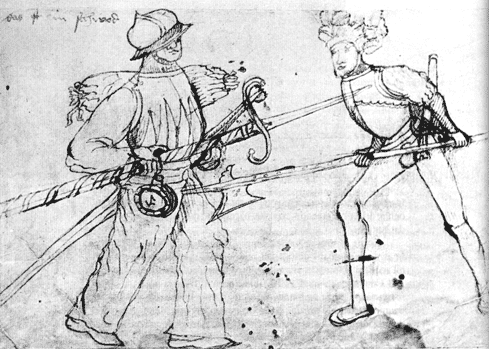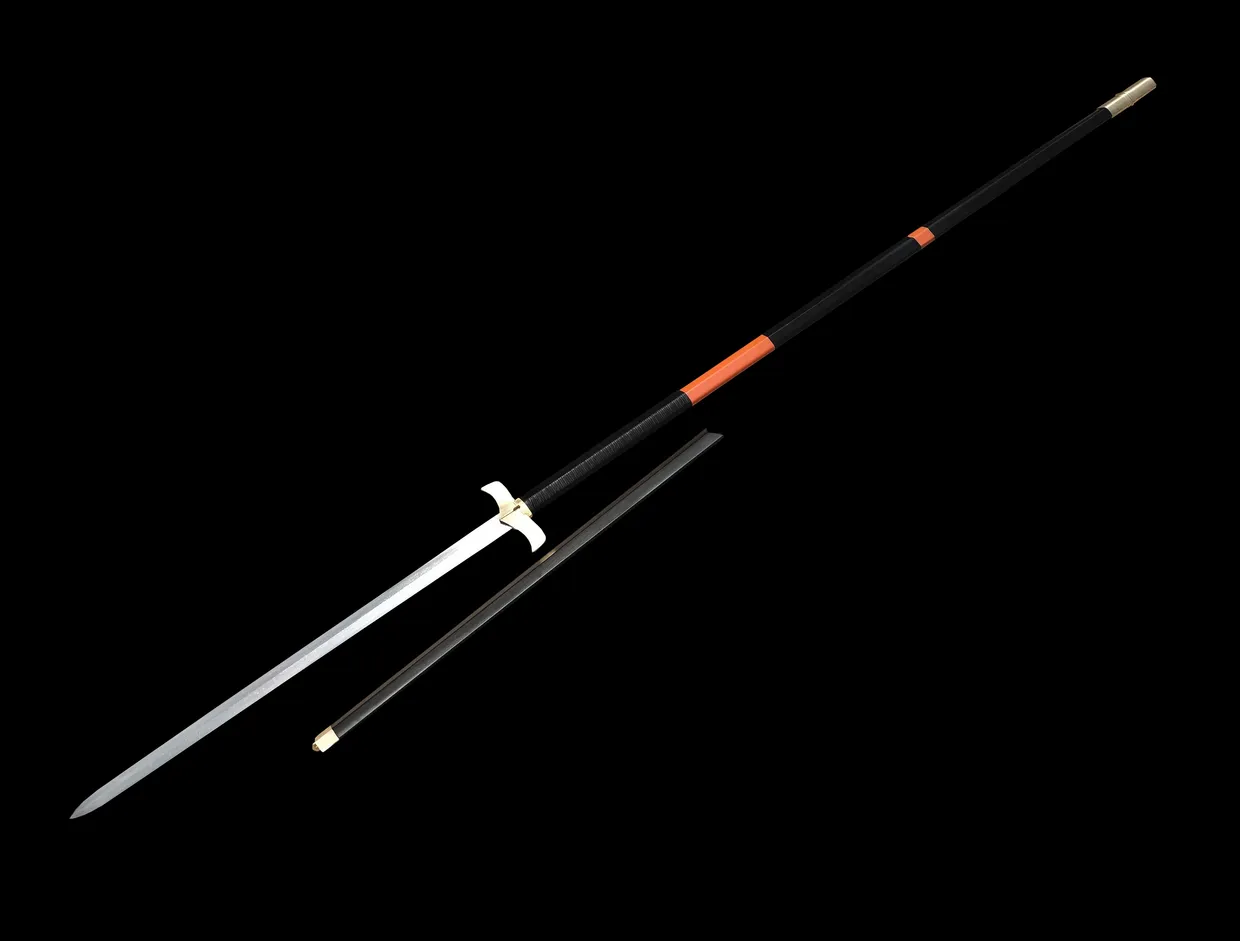Swordstaff on:
[Wikipedia]
[Google]
[Amazon]

 A swordstaff () is a Scandinavian polearm, used in the medieval ages. It is made by placing a blade at the end of a staff.
Evidence of the weapon in use at the Battle of Elfsborg ( Alvesborg) 1502 is provided by Paul Dolnstein, a
A swordstaff () is a Scandinavian polearm, used in the medieval ages. It is made by placing a blade at the end of a staff.
Evidence of the weapon in use at the Battle of Elfsborg ( Alvesborg) 1502 is provided by Paul Dolnstein, a
File:Bronze Spear from the Tomb of the King of Chu, Shizi Mountain Xuzhou Jiangsu Western Han 2nd century BCE MH.jpg, Chinese swordstaff called a pi (é¹),
Meyers GroĆes Konversations-Lexikon - Schwertstab
(in German) {{Swords by region Medieval polearms

 A swordstaff () is a Scandinavian polearm, used in the medieval ages. It is made by placing a blade at the end of a staff.
Evidence of the weapon in use at the Battle of Elfsborg ( Alvesborg) 1502 is provided by Paul Dolnstein, a
A swordstaff () is a Scandinavian polearm, used in the medieval ages. It is made by placing a blade at the end of a staff.
Evidence of the weapon in use at the Battle of Elfsborg ( Alvesborg) 1502 is provided by Paul Dolnstein, a landsknecht
The (singular: , ), also rendered as Landsknechts or Lansquenets, were Germanic mercenaries used in pike and shot formations during the early modern period. Consisting predominantly of pikemen and supporting foot soldiers, their front line wa ...
mercenary who fought in the battle, who refers to the Swedes carrying "good pikes made from swords". He also provides sketches of the weapon.
Although Dolstein believed the weapon was made from swords, there is no independent confirmation of this.
Origins
The weapon has visual similarities to thepartisan
Partisan may refer to:
Military
* Partisan (weapon), a pole weapon
* Partisan (military), paramilitary forces engaged behind the front line
Films
* ''Partisan'' (film), a 2015 Australian film
* ''Hell River'', a 1974 Yugoslavian film also know ...
and Langue de boeuf and may share common origins. However, Scandinavian Sagas make references to a number of pole weapons, usually translated as halberd
A halberd (also called halbard, halbert or Swiss voulge) is a two-handed pole weapon that came to prominent use during the 13th, 14th, 15th, and 16th centuries. The word ''halberd'' is cognate with the German word ''Hellebarde'', deriving from ...
or bill
Bill(s) may refer to:
Common meanings
* Banknote, paper cash (especially in the United States)
* Bill (law), a proposed law put before a legislature
* Invoice, commercial document issued by a seller to a buyer
* Bill, a bird or animal's beak
Plac ...
. These weapons are used to cut and to stab but their names suggest they were derived from the spear rather than a cutting weapon e.g. the Hewing Spear ( hƶggspjĆ³t) and the atgeir
An atgeir, sometimes called a "mail-piercer" or "hewing-spear", was a type of polearm in use in Viking Age Scandinavia and Norse colonies in the British Isles and Iceland. The word is related to the old norse ''geirr'', meaning spear. It is usua ...
. While clearly identifiable artistic or archaeological evidence of the form of these weapons is lacking, it is possible that the swordstaff may be a late derivative of this family of weapons.
Chinese swordstaff
Han dynasty
The Han dynasty (, ; ) was an imperial dynasty of China (202 BC ā 9 AD, 25ā220 AD), established by Liu Bang (Emperor Gao) and ruled by the House of Liu. The dynasty was preceded by the short-lived Qin dynasty (221ā207 BC) and a warr ...
File:Han Dynasty Sha é© with bat shaped guard and scabbard.jpg, Han Dynasty Sha é© with bat shaped guard and scabbard
File:Han_Dynasty_Sha_%E9%93%A9_with_bat_shaped_guard_and_blade.jpg, closeup of modern recreation of the sha with a bat shaped guard
Chinese polearms
The three most common types of Chinese pole weapon, polearms are the ''dagger-axe, ge'' (ę), ''Qiang (spear), qiang'' (ę§), and Ji (polearm), ji (ę). They are translated into English as dagger-axe, spear, and halberd. Dagger-axes were origi ...
that resembled swordstaves were also commonly used in ancient China from the late Warring States/Qin Dynasty to the Han Dynasty era. These were known as the pi (é¹), translated into English as either sword-staff or long lance, and a long bladed ranseur-like swordstaff weapon called the sha (é©) with a blade that was around 62 cm long (up to 80 cm long) and a hilt that was ~19 cm long.
Notes
External links
Meyers GroĆes Konversations-Lexikon - Schwertstab
(in German) {{Swords by region Medieval polearms